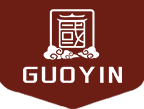03
2025
-
07
Logistics Optimization and Tariff Strategies in Cross-Border Steel Trade
This article explores logistics optimization and tariff strategies in cross-border steel trade. By analyzing the unique characteristics of steel logistics, it proposes optimization solutions, including transportation mode selection, warehouse management, and the application of information technology. Additionally, it examines the impact of tariff policies, compares the cost-effectiveness of different trade routes, and provides comprehensive strategic recommendations for businesses engaged in cross-border steel trade.
Author:
Against the backdrop of global economic integration, cross-border steel trade has become a significant component of international commerce. However, due to steel’s heavy weight, large volume, and relatively low unit value, logistics costs and tariff burdens are critical factors affecting trade competitiveness.
This article delves into logistics optimization methods and tariff strategy selection for cross-border steel trade, helping companies reduce operational costs and enhance market competitiveness.
Ⅰ. Logistics Optimization Strategies for Cross-Border Steel Trade
Steel logistics exhibit distinct characteristics, including large transport volumes, low unit value, and strict transportation requirements. These traits result in logistics costs accounting for 15–25% of total costs—far higher than the 5–8% for general goods. Thus, optimizing steel logistics is essential for reducing overall trade expenses.
In terms of transportation mode selection, companies should adopt flexible combinations based on trade distance and delivery timelines. For long-distance international shipping, maritime transport is the preferred option due to its low cost (approximately $0.05–0.10 per ton-kilometer). For medium- and short-distance cross-border trade, rail ($0.12–0.18 per ton-kilometer) or road transport ($0.3–0.5 per ton-kilometer) may be more suitable. Notably, the China-Europe Railway Express has reduced transit times from 40–50 days by sea to just 12–18 days. Although rail costs 30–40% more, it remains competitive for high-value steel products.
Warehouse management optimization can be achieved through Vendor-Managed Inventory (VMI), reducing inventory costs by 10–15%. Establishing bonded warehouses at key trade hubs allows deferred tariff payments and enables faster distribution. For example, a steel company’s regional distribution center in Southeast Asia reduced average delivery times from 45 to 20 days while improving inventory turnover by 40%.
The application of information technology is crucial for enhancing logistics efficiency. IoT-based real-time cargo monitoring can reduce transport losses by 2–3%, big data analytics can optimize routes and cut costs by 8–12%, and blockchain technology can streamline documentation, slashing customs clearance times by 30–50%. A major steel manufacturer that implemented an intelligent logistics platform saw on-time delivery rates rise from 78% to 92%, with customer complaints dropping by 60%.
Ⅱ. Tariff Strategy Analysis in Cross-Border Steel Trade
Tariff policies significantly impact steel trade. For instance, the U.S. Section 232 tariffs imposed a 25% duty on steel imports, leading to a 12.7% decline in U.S. steel imports in 2018 and a 28% increase in domestic steel prices. Similarly, the EU’s steel safeguard measures imposed a 25% tariff on 26 steel product categories beyond quota limits, reducing China’s steel exports to Europe by approximately 15%.
Tariff costs vary considerably across trade routes. Comparing major routes—China to ASEAN (0–5% average tariffs), the Middle East (3–8%), and Europe/America (10–25%)—tariff differentials can range from 5 to 20 percentage points. Businesses should leverage free trade agreements (FTAs), such as the Regional Comprehensive Economic Partnership (RCEP), which will gradually eliminate tariffs on 90% of steel products among member countries, significantly benefiting intra-Asian steel trade.
Utilizing rules of origin is another effective way to reduce tariffs. For example, automotive steel processed in ASEAN countries with at least 35% regional value content can qualify for origin status, granting preferential tariff rates. One company established a galvanizing production line in Vietnam, reducing EU import tariffs from 10% to zero and saving over $8 million in annual tariff expenses.
Tariff planning should also consider special economic zone policies. Under the China-Pakistan Economic Corridor, Pakistan reduced tariffs on Chinese steel imports from 20% to 3%. Meanwhile, the African Continental Free Trade Area (AfCFTA) will phase out intra-regional steel tariffs. Proactive positioning in these regions can provide first-mover advantages.
Ⅲ. Comprehensive Optimization Recommendations and Future Outlook
To achieve holistic optimization in cross-border steel trade, logistics and tariff strategies must be coordinated. Companies should develop a total cost model incorporating transportation expenses, tariff payments, capital costs, and time efficiency. For instance, opting for slightly more expensive transport modes (e.g., rail instead of sea) may reduce financing costs by shortening lead times or avoiding high-tariff markets.
A comparative analysis of major trade routes reveals that China-ASEAN routes offer the best cost efficiency due to low tariffs and short distances. China-Europe routes benefit from the railway’s balance between speed and cost, while China-U.S. routes require careful planning due to high tariffs. Businesses should design differentiated route combinations based on product characteristics and target markets.
Looking ahead, digitalization and sustainability will shape the future of cross-border steel trade. Smart contracts can automate tariff payments and logistics instructions, while carbon tariffs may influence traditional transport choices. By 2025, digital twin-enabled steel logistics systems could further reduce operational costs by 15%. Companies should invest in these emerging technologies to build resilient and sustainable trade systems.
Ⅳ. Conclusion
The competitiveness of cross-border steel trade hinges on optimizing both logistics efficiency and tariff costs. By strategically selecting transport modes, refining warehouse networks, adopting digital solutions, and leveraging preferential tariff policies and origin rules, businesses can significantly expand their global market share.
In an increasingly complex international trade environment, steel traders must establish agile supply chains and continuously refine logistics and tariff strategies to secure long-term competitive advantages.
Key words:
Related news


